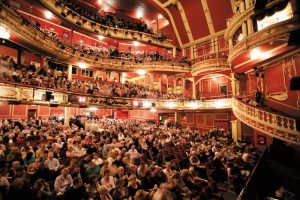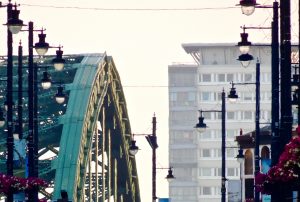The Sunderland 2021 team take a look at Sunderland’s cultural timeline, and how our industrial past has shaped the North East today.
From the heavy crash of the shipbuilding yards to the delicate touch of the glassblower, the gritty miners who toiled beneath the ground and the potters who turned clay into craft; the image of the Sunderland’s industrial heritage is one of hard work and harsh conditions, all work, no play.
Yet while there’s no doubt it would have been tough, the reality is Sunderland’s industrial past was fuelled by song and creativity, art and dance, storytelling and design.
In fact, from the artists who created England’s first stained glass window in the city in 647AD to today’s digital games and software designers, there’s a common thread: culture.
As Sunderland bids to become the UK City of Culture 2021, we look back at the cultural heritage that has made the city so vibrant, multi-layered and unique.
Timeline of culture
Venerable Bede was born in the city in the 7th century and during his life wrote about everything from science to history, music and poems. His work reflected a fascinating world, and filtered through to the local community with chants and poems, art and stories. The monks laid the foundations for the culture that would seep through the area for centuries to come.
Heavy industry, new ideas
By the 18th century Sunderland’s shipyards and pits pulsated with the heavy beat of hammers and roar of men’s shouts. Yet there was music and song too: the whistled tune to the sing song in the pub at the end of the day. And the glassmakers didn’t just produce goods, they created artworks.
There was music: border ballads and dance tunes with pipes and fiddles – some from Scotland, others from France, Ireland and the south of England – were given a unique north eastern twist. Hornpipes, flutes and piccolos were played by travelling minstrels at street corners and county fairs, where locals gathered to dance, share stories and trade crafts.

Culture for the masses
By the 19th century Sunderland had opened one of the first municipal museums outside of London. Libraries sprang up, architecture became refined and education brought a new appreciation of culture, art and design.
Soon a night at the Sunderland Empire or the Royalty Theatre would be a rare treat for some, an evening at a pub with a folk song a more likely option for many. Working men’s clubs were alive with talent – boisterous comedians and pitch perfect singers. Sport had its own impact creating
a different kind of culture, one that’s passed down the generations with stories, memories and passion.

Now and tomorrow
Times change but Sunderland has kept its cultural heart. The art of the glassmaker is revisited at the National Glass Centre, brass bands with colliery links still perform and folk music is still celebrated at pubs and clubs.
There’s a lively modern music scene, exciting visual and digital arts, photography and drama.
New developments across the city celebrate our cultural heritage, from the renovation of the old Fire Station and the new Music, Arts and Culture Quarter, to the restoration of sites like Hylton Castle and Roker Pier.
It’s the perfect time to share Sunderland’s culture as City of Culture 2021.




